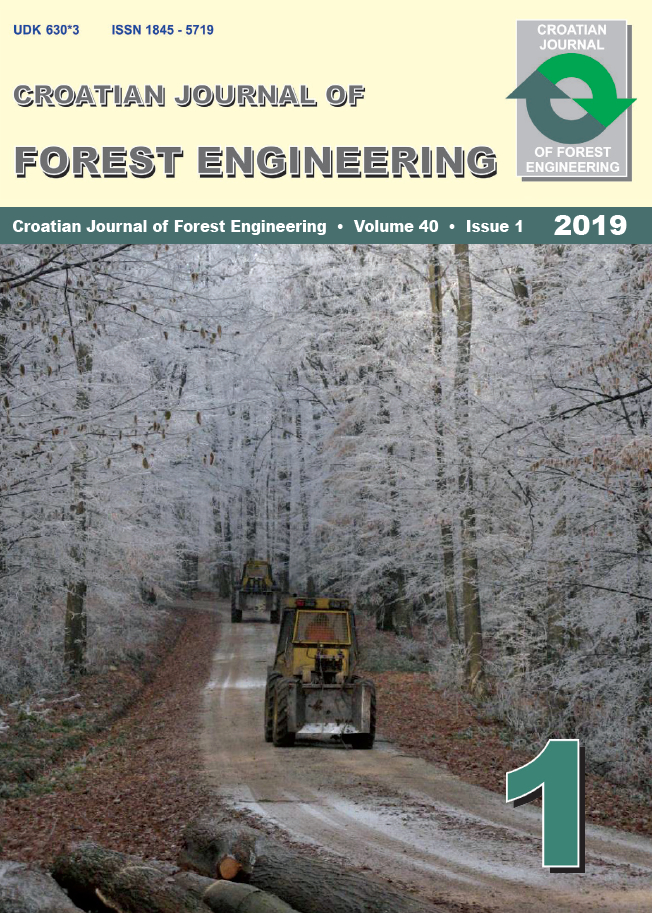Comparison of Productivity, Cost and Chip Quality of Four Balanced Harvest Systems Operating in a Eucalyptus globulus Plantation in Western Australia
volume: 40, issue: 1
pp: 10
- Author(s):
-
- Strandgard Martin
- Mitchell Rick
- Wiedemann John
- Article category:
- Original scientific paper
- Keywords:
- forest harvest system, cut-to-length, infield chipping, Eucalyptus globulus, wood chip, balanced system
Abstract
HTML
There have been few comparative harvest system studies to provide a basis to understand the
performance and chip quality of harvest systems used in eucalypt plantations.
The study compared the CTL – cut-to-length method at the stump, WTM – whole tree method
where trees were processed to logs at roadside, IFC-DDC – infield chipping using a debark/
delimb/chipper, IFC-F/C – infield chipping using a separate flail and chipper harvest systems
on a single site in south-west Western Australia.
The WTM and IFC-F/C harvest systems were the most productive. The productivity of the
CTL and IFC-DDC harvest systems was about 25% less than that of the other harvest systems.
The CTL harvest system produced wood at the highest cost resulting from it having a large
number of machines without a correspondingly high productivity level. However, the CTL
harvest system has advantages over the other systems through retaining evenly distributed
logging residues, low machinery impact on the site and flexibility to add or subtract machines
as conditions change.
Two limitations of this study were that the harvest systems were only compared at a single
mean tree size and operator performance differences may have influenced harvest system
productivity. Previous studies have found that the balance of machines in a harvest system
can change with changes in mean tree size. This is an area where further research is required.
Wood chip samples from three of the four harvest systems did not meet the company chip
specifications. However, the deviations from the specifications were minor.

